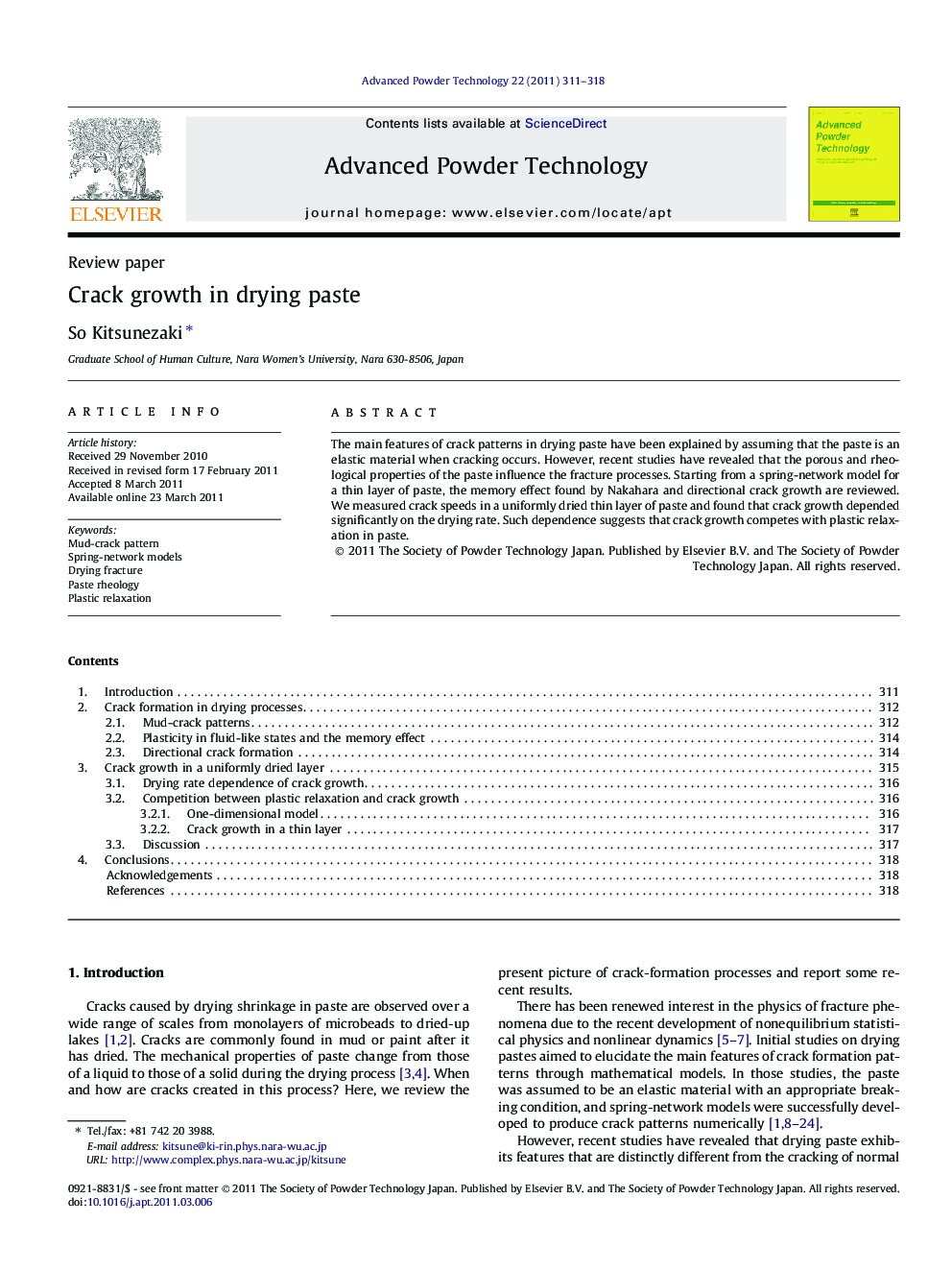| Article ID | Journal | Published Year | Pages | File Type |
|---|---|---|---|---|
| 144806 | Advanced Powder Technology | 2011 | 8 Pages |
Abstract
The main features of crack patterns in drying paste have been explained by assuming that the paste is an elastic material when cracking occurs. However, recent studies have revealed that the porous and rheological properties of the paste influence the fracture processes. Starting from a spring-network model for a thin layer of paste, the memory effect found by Nakahara and directional crack growth are reviewed. We measured crack speeds in a uniformly dried thin layer of paste and found that crack growth depended significantly on the drying rate. Such dependence suggests that crack growth competes with plastic relaxation in paste.
Keywords
Related Topics
Physical Sciences and Engineering
Chemical Engineering
Chemical Engineering (General)
Authors
So Kitsunezaki,
